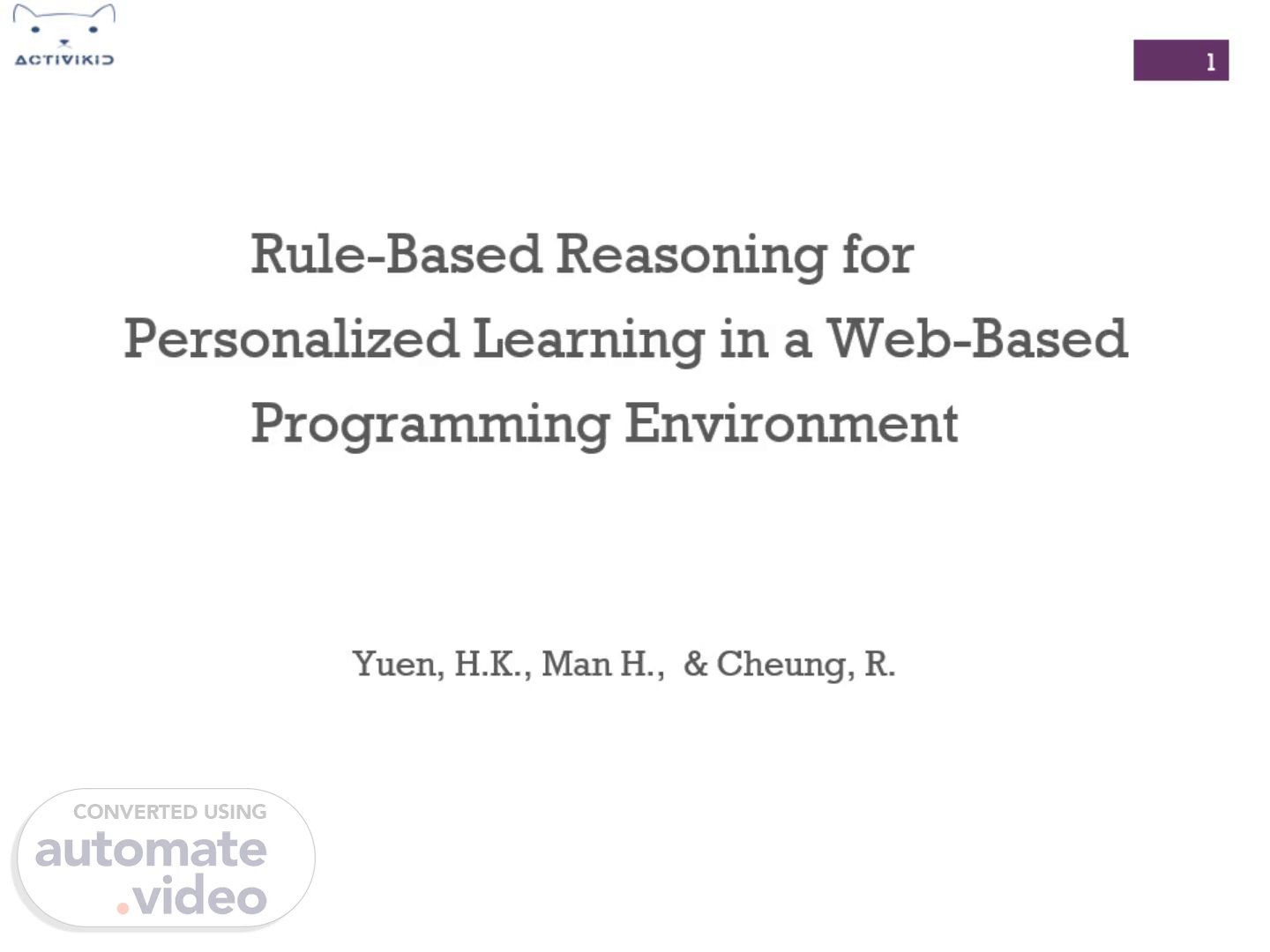Scene 1 (0s)
Rule-Based Reasoning for Personalized Learning in a Web-Based Programming Environment.
Scene 2 (11s)
The Challenge in Programming Education. Students enter courses with different skill levels. Traditional assessment focuses on the final product, not the learning process. Existing adaptive systems are often "black boxes," lacking educator control. The Need: A system that understands how a student programs and adapts transparently..
Scene 3 (27s)
An Adaptive Learning Ecosystem. A personalized e-learning environment for Java. Integrates three key components: Web-Based IDE: To capture rich, real-time programming data. Explicit Rule Engine (Jess): For transparent, controllable adaptive logic. Ontology: To structure the course domain and user models.
Scene 4 (44s)
The Core: Web-Based Programming Env. Primary Function: logs all student programming activity: Snapshots of source code. Compilation timestamps and success/failure events. Detailed error messages. Names of associated programs. All interaction data is synchronized with cloud storage for analysis. ..\plej\screen_1754968640907.mp4.
Scene 5 (1m 12s)
The Learning & Assessment Cycle. A continuous, data-driven feedback loop. Attempt: Student edits, compiles, and debugs code. Assess: System captures program source and compilation info. Feedback: Automated feedback and assessment results are generated. Learn: Student uses feedback to improve.
Scene 6 (1m 29s)
Automated Assessment & Feedback in Action. Instructors predefine test cases with standard inputs and expected outputs. Upon submission, the system automatically runs these tests. It generates a detailed report comparing the student's output to the model answers. Benefit: Provides students with immediate, objective, and actionable feedback..
Scene 7 (1m 48s)
From Data to Adaptation: The Rule Engine. The logged programming data fuels the adaptation model. The Jess rule engine analyzes patterns in the data. It moves beyond simple success/failure to analyze the debugging process. Key Rule Logic: The system specifically identifies and penalizes persistent, recurring errors at the same source code locations across multiple compilations..
Scene 8 (2m 14s)
Dynamic Course Promotion /Demotion. The ultimate application of the adaptive rules. A student's course level (Novice, Intermediate, Expert) is not static. Progression is determined by a comprehensive performance evaluation: Answer accuracy. Completion time & number of trials. Crucially, the process-oriented score from the compilation analysis..
Scene 9 (2m 30s)
Conclusion & Key Contributions. Contribution 1: Process-Oriented Assessment PleJ analyzes the iterative cycle of debugging, providing a truer measure of understanding than just the final code. Contribution 2: Transparent Adaptation The use of explicit Jess rules makes the pedagogical logic clear and modifiable by educators. Result: An effective, practical architecture for delivering a truly personalized learning experience in a web-based programming environment..
